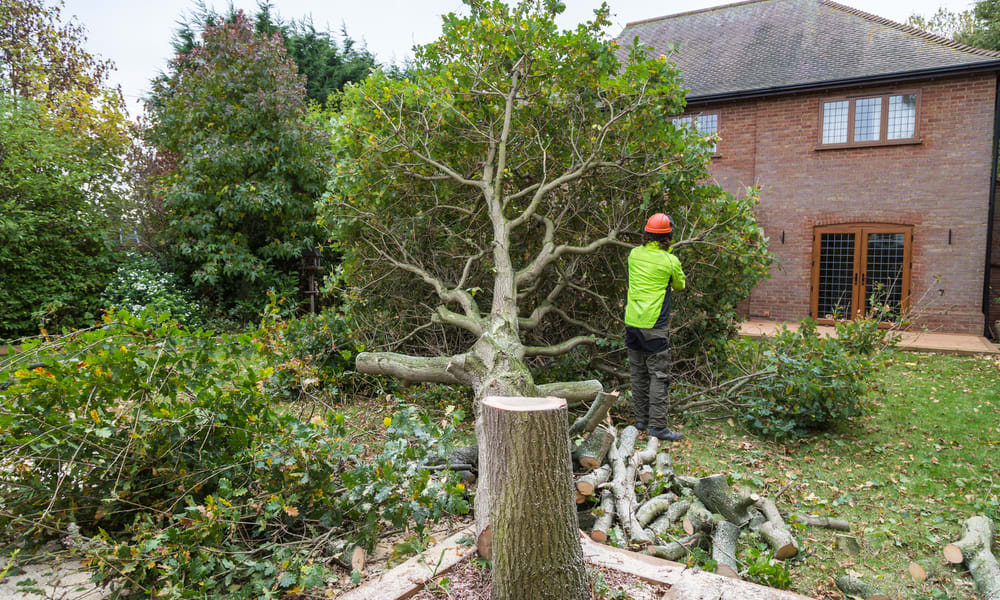Guide to Cost-Effective, Reliable Tree Services
Trees enhance property aesthetics, provide shade, and contribute to environmental health. However, they require proper care and maintenance to thrive and remain safe. Professional tree services offer solutions for tree health management, removal, and emergency situations. Understanding the scope, costs, and benefits of these services helps property owners make informed decisions about tree care while balancing quality and affordability. This guide explores essential information about tree services, helping you identify when to call professionals and how to find reliable, cost-effective options.

Understanding Professional Tree Service Offerings
Professional tree services encompass various specialized tasks requiring technical expertise, specialized equipment, and safety knowledge. Common services include tree pruning to remove dead branches and maintain tree health; tree removal for dead, diseased, or dangerously positioned trees; stump grinding to eliminate remaining stumps after removal; emergency services for storm damage; disease diagnosis and treatment; and preventative care to maintain healthy trees. Reputable companies employ certified arborists who understand tree biology, proper pruning techniques, and local regulations regarding tree removal and preservation. These professionals can identify potential hazards, tree diseases, and provide appropriate solutions customized to your property’s specific needs.
Advantages of Choosing Experienced Tree Removal Experts
Hiring professional tree service providers offers numerous benefits over DIY approaches. Safety stands as the primary advantage—experienced professionals have proper training, equipment, and insurance to handle hazardous tasks like removing large branches or entire trees near structures. They understand complex techniques like directional felling, which prevents damage to surrounding property. Additionally, professional services ensure compliance with local regulations and permit requirements, which often govern tree removal activities. Professionals also provide comprehensive solutions, handling not just the initial removal but also cleanup, stump removal, and proper disposal of debris. Their knowledge of tree biology means they can identify potential issues before they become costly problems and recommend appropriate care strategies for remaining trees on your property.
When to Schedule Tree Services vs. Emergency Situations
Understanding timing for tree services helps in both planning and budgeting. Routine maintenance like pruning is typically best scheduled during late fall or winter when trees are dormant, allowing for better visibility of branch structure and minimal stress to the tree. Spring is ideal for fertilization treatments and pest management plans, while summer is appropriate for assessing overall tree health. Emergency situations requiring immediate attention include trees leaning toward structures after storms, large hanging branches (often called “widow makers”), sudden appearance of extensive decay or fungal growth, and trees showing signs of imminent failure such as cracking sounds or visible root lifting. Regular inspections by qualified arborists (typically recommended every 3-5 years for healthy trees) can identify potential problems before they become emergencies, potentially saving significant costs over time.
Practical Examples and Helpful Tips
Several practical scenarios illustrate when professional tree services prove valuable. Consider a mature oak tree with branches extending over a home’s roof—professional pruning can remove hazardous limbs while preserving the tree’s health and structure. For dead trees near property lines, professional removal prevents potential liability issues if the tree falls and damages neighboring property. When purchasing new property, a professional assessment can identify trees requiring immediate attention or future maintenance planning. For effective collaboration with tree service providers, obtain multiple written estimates detailing specific work to be performed, equipment used, cleanup procedures, and timeframes. Request proof of insurance covering both property damage and worker injury. Ask about credentials such as ISA (International Society of Arboriculture) certification and check online reviews and references. Consider post-service needs like stump removal, which may require separate scheduling or additional fees if not included in initial quotes.
Cost Ranges for Tree Removal
Tree service costs vary significantly based on multiple factors. Tree size is the primary determinant—small trees (under 30 feet) typically cost $150-$450 to remove, medium trees (30-60 feet) range from $450-$700, and large trees (60-100+ feet) can cost $900-$2,000 or more. Accessibility impacts pricing significantly; trees near structures, power lines, or with limited access require specialized equipment and techniques, increasing costs by 25-50%. Additional services affect final pricing: stump removal typically adds $75-$300 depending on size and root system complexity, while debris hauling may add $50-$200. Emergency services command premium rates, often 25-50% higher than scheduled work. Geographic location influences baseline pricing, with urban areas generally charging more than rural locations.
| Service Type | Small Tree (<30 ft) | Medium Tree (30-60 ft) | Large Tree (60+ ft) |
|---|---|---|---|
| Basic Removal | $150-$450 | $450-$700 | $900-$2,000+ |
| Stump Grinding | $75-$150 | $150-$250 | $250-$500 |
| Pruning/Trimming | $75-$250 | $250-$500 | $500-$1,200 |
| Emergency Service | Add 25-50% premium to base price | Add 25-50% premium | Add 25-50% premium |
Prices, rates, or cost estimates mentioned in this article are based on the latest available information but may change over time. Independent research is advised before making financial decisions.
Evaluating Tree Service Providers Effectively
Finding qualified tree service professionals requires careful assessment. Start by verifying proper credentials: legitimate tree service companies maintain liability insurance (typically $1-2 million in coverage) and workers’ compensation insurance, both protecting you from liability for accidents or property damage. Request proof of ISA certification for arborists, indicating professional knowledge and commitment to industry standards. Review the company’s reputation through online reviews, testimonials, and ask for references from past clients. For significant projects, obtain at least three detailed written estimates specifying work scope, equipment, cleanup procedures, and timeline. Pay attention to communication quality—responsive, clear communication often indicates professional service standards. While cost matters, extremely low bids may indicate inadequate insurance, improper equipment, or inexperienced workers. The most cost-effective option balances reasonable pricing with professional qualifications, proper equipment, and comprehensive service.
Tree services represent an investment in property safety, aesthetics, and long-term tree health. By understanding service types, recognizing the advantages of professional expertise, and evaluating providers carefully, property owners can make informed decisions that balance quality and cost-effectiveness for their tree care needs.




